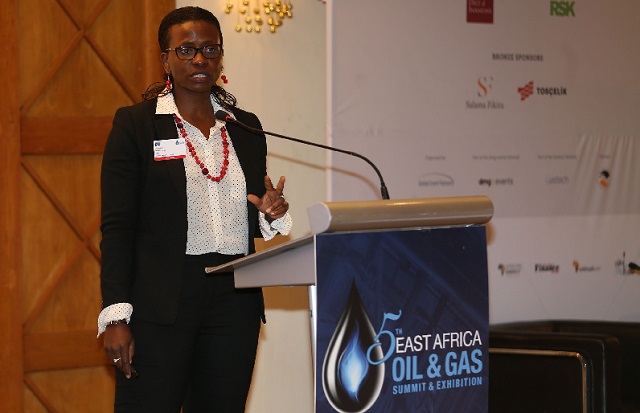
COMMENT | GARD BENDA | On Nov. 12, hundreds of people turned up at the headquarters of Buliisa and Nwoya districts to participate in the public hearing for the Tilenga Project Environment and Social Impact Assessment (ESIA) study done by AECOM Uganda Ltd on behalf of the Tilenga Project partners.
The Tilenga project involves the development of six oil fields in the Albertine Graben by the oil companies—Total E&P, Tullow Oil and CNOOC. These oil fields are located within the Murchison Falls National Park.
The main objective of the ESIA study is to establish the likely environmental challenges paused by the project and propose concrete mitigation strategies prior to the undertaking of the project.
Some of the key aspects include ensuring net gain in biodiversity and ecosystems preservation amidst oil extraction, health and safety of the communities directly and indirectly related to the project area, general environment and social impacts as well as beneficial and or social cost benefit analysis considerations. This is why both the ESIA and the public hearing are critical.
The National Environment Management Authority (NEMA) is required by law to oversee this process (EIA regulations of 1998 particularly regulations 18, 19, 20 and 22 (2)). Unfortunately, NEMA failed to observe this.
That observation notwithstanding, my main focus is the content of the ESIA report. The sole reason for my focus is because the NEMA Executive Director is obliged to make a decision to approve or do otherwise upon satisfactory determination that there are no threats of significant negative impacts posed by the project and that sufficient mitigation measures to deal with the impacts have been proposed. The NEMA Executive Director takes a decision considering full satisfaction that key critical aspects provided under regulation 24 have been met.
These include; the validity of the predictions made in the environmental impact statement, analysis of the economic and social cultural impacts of the project, the comments made by different stakeholders including project affected communities, the report of the presiding officer at a public hearing where applicable and any other issues considered crucial in particular circumstances.
I and colleagues from CSOs have been keenly following the process and analysed the text and content of the ESIA report and we call on NEMA not to rush to approve the report as it is but rather reflect more on various options provided under the EIA regulations.
Some of these include the requirement that the project could be re-designed including directing that different technology or an alternative site be chosen, referring back the project or part thereof to the developer where there is insufficient information for further study or submission of additional information as may be required to enable the Executive Director make a decision.
We need the Tilenga project so we cannot afford to suggest that NEMA rejects it. What we are saying that there are outstanding issues that need to be addressed first before any approvals can be granted. These are the outstanding issues.
First, the ESIA study does not provide concrete sufficient strategies and plans to support the Tilenga Project. For example, it suggests that different strategies and plans will be developed and implemented such as community impact management strategy, biodiversity and ecosystem services management plan, oil spill contingency plan , resettlement action plan (RAP), cultural heritage and archeology management plan, livelihood restoration plan, chemical management plan, etc.
All these tools should have been developed and appended on the ESIA so that one is able to read them and assess if they really address the potential impacts of the project. These are the most important and are the gist of the report. But, as it is, one has nothing to refer to in evaluating the likely impact of the project.
Second the report does provide for benchmarks for the valuation of ecosystem services lost due to disturbances given the fact that the project is to be implemented within the Murchison Falls Protection Area (MFPA). This area covers the Murchison Falls—Albert Delta Wetland System Ramsar site along the Victoria Nile and Murchison Falls National Park (MFNP) which is the largest and the second-most visited national park in Uganda and it is ecologically vital for Uganda’s unique animal and plant species. The ESIA needed to do more analysis on the value of the ecosystem services lost and provide alternative options for the equivalent and corresponding mitigation measures.
Thirdly the ESIA study does not provide an elaborate analysis about the transboundary relations regarding the potential impacts of the project on the diplomatic relations and subsequent likely consequences that may arise from harsh responses by the Nile River Basin Riparian States. Considering the risks related to the possibility of an oil spill and the likely impact on water volumes, more needs to be done. Otherwise, we risk tensions with other countries.
Apart from this, the ESIA does not provide analysis on the implication of the project on existing cross border agreements and treaties such as the Ngurdoto Agreement on the use of Lake Albert resources and the role of the joint boundary commission. Risk analysis in regard to transboundary disputes and possible proposals on dispute management should clearly be highlighted.
The ESIA also lacks clarity on benefits for the communities. While it provides highlights of the benefits of the project, there is no clear information on how much the communities will benefit. For example the communities have been getting 20% from tourism but the report does not indicate whether they will continue to benefit in the same manner or in a better way.
Limited conflict analysis in the report is prevalent and no proposals on mechanisms to address grievances. The report, for instance, provides for minimal flaring during normal operations as one of the mitigation measures for emissions yet world over flaring is prohibited.
The ESIA does not bring out strongly issues of corporate accountability for irresponsible operations. There is, for instance, no clear mitigation plan for contingencies and in case of the pipeline leakage. It also lacks alternative analysis specifically the alternative options regarding the different modes of resettlement and compensation.
Finally, tracking the waste disposal management process is inadequate and does not capture the role of other critical stakeholders such the involvement of local governments. With these reasons, I implore NEMA not to rush and approve the ESIA as it is, because it requires a little more scrutiny.
****
Gard Benda is the Chairperson of Publish What You Pay – Uganda and Executive Director of World Voices Uganda
****
RELATED STORY: Tilenga Project: Government to conduct public oil hearings
 The Independent Uganda: You get the Truth we Pay the Price
The Independent Uganda: You get the Truth we Pay the Price


